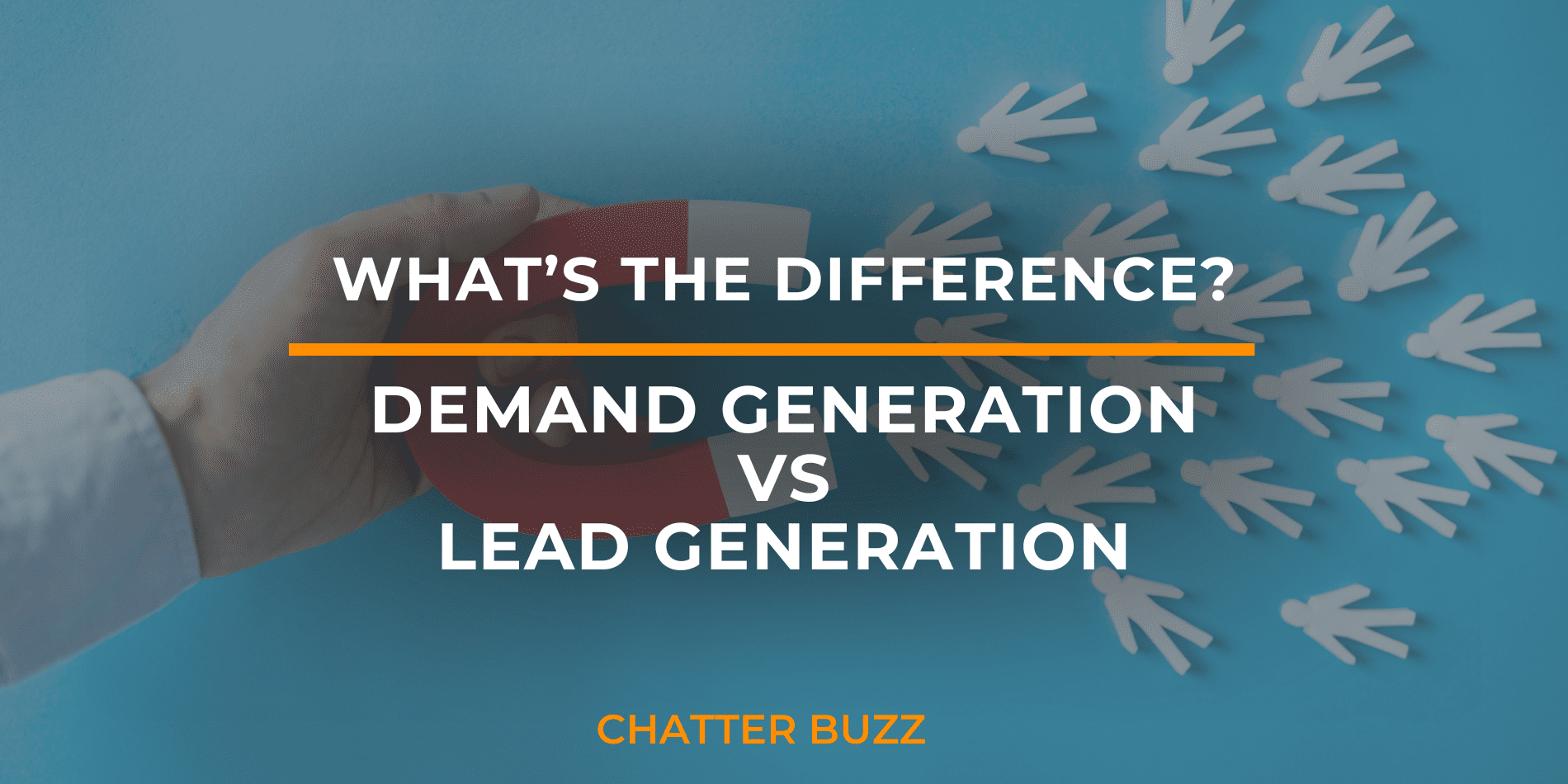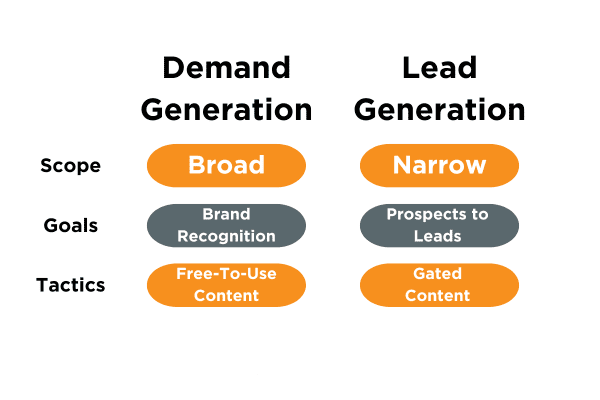Demand Generation vs. Lead Generation: What’s The Difference?

Marketing can be complicated.
CAN be. But it doesn’t have to be that way.
Demand generation and lead generation sound like the same idea, but they are vastly different strategies when it comes to getting leads for your business.
Understanding the differences between these two approaches can help businesses tailor their marketing efforts more effectively and achieve better results.
In this blog, we are going to delve into what demand generation and lead generation are and explore which types of companies might benefit most from each strategy.
We will go over:
- What are demand generation and lead generation
- What are their roles
- What are the key differences between them
What Is Demand Generation?
Demand generation is a holistic approach aimed at creating awareness and interest in a company’s products or services.
It focuses on building a brand’s visibility and credibility. These result in increasing market demand over time.
Demand generation encompasses a wide range of marketing activities including:
- Content marketing
- Social media engagement
- SEO
- Webinars
- Events
The primary goal of demand generation is to attract a broad audience and nurture them through the sales funnel until they are ready to make a purchase. This approach often involves educating potential customers about their problems and presenting the company’s offerings as viable solutions.

Role of Demand Generation
As we said earlier, demand generation is widely based on generating awareness. This is best started by creating engaging, helpful content.
Engaging Content
What is engaging content? Blog posts that answer frequently asked questions, social media posts that spark interest and encourage debates, and even dynamic ad copy that addresses pain points.

Shifting from Trust to Buying Intent
As awareness grows, the focus shifts to generating buying intent by building trust and credibility. Addressing the specific needs and pain points of potential customers can guide them through the consideration stage of the funnel.
Effective strategies influence the decision-making process by providing valuable information and demonstrating the benefits of the product or service. This ultimately encourages prospects to make a purchase.
Account-Based Marketing
Finally, demand generation ensures that engaged accounts are funneled into Account-Based Marketing (ABM) programs.
ABM programs target high-value accounts with personalized marketing efforts to further drive engagement and conversion. By continuing to nurture these accounts and provide tailored content, businesses can maintain a strong connection with potential customers. This will lead to higher conversion rates and long-term customer relationships.
Demand generation, therefore, is integral to full-funnel marketing, driving awareness, intent, and engagement at every stage of the buyer’s journey.

What Is Lead Generation?
Lead generation is a more targeted approach that aims to identify and capture potential customers, or leads, who have expressed interest in a company’s products or services.
This strategy involves collecting contact information from prospects through various tactics such as:
- Gated content
- Email campaigns
- Landing pages
- Online forms
The main objective of lead generation is to convert prospects into qualified leads who can be nurtured through personalized follow-up communications.

The Role of Lead Generation
Lead generation is a crucial component of modern marketing strategies, focusing on connecting with target accounts to leverage inbound tactics effectively.
By identifying and engaging potential customers, businesses can attract and convert prospects who are showing interest in their products or services.
This ensures that marketing efforts are directed towards leads and prospects most likely to benefit from the offerings, maximizing the efficiency of these inbound strategies.
Identify Intent Signals
Once the lead is established, the next step is to start a dialogue when intent signals are detected. These signals can be events like:
- Website visits
- Content downloads
- Engagement with content
These indicate the lead’s interest in learning more about the product or service. By promptly responding to these cues, businesses can initiate positive interactions, providing the lead with information and support to make informed decisions. This form of engagement enhances the prospect’s overall experience and increases the likelihood of conversion.
Obtaining Marketing-Qualified Leads (MQLs)
That’s not where the journey ends, however. Lead generation also involves activating marketing-qualified leads (MQLs) and expanding relationships with existing clients.
MQLs, who have demonstrated a higher level of interest, are nurtured through targeted campaigns to move them closer to a purchase decision. This tactic ensures growth and strengthens customer relationships by continuously providing value across different areas of the organization.
Through effective lead generation, companies can create a steady pipeline of qualified prospects, foster deeper connections, and drive long-term success.
Key Differences Between Demand Generation and Lead Generation
After reading through that, you probably understand a bit more of both, but you’re probably still thinking “ok, but what is the difference?”
That’s why we created this section to break it down into easy, digestible pieces.
Scope and Focus
Demand Generation works broadly, focusing on creating market interest and awareness across many platforms.
Lead Generation is more narrowed, focusing on capturing specific contact information from interested prospects.
Goals
Demand Generation is meant to build brand recognition, educate the market, and create long-term demand.
Lead Generation works towards capturing and converting prospects into qualified leads for the sales team.
Tactics
Demand Generation tactics focus more on free-to-use content such as blogs, SEO, social media posts, and webinars.
Meanwhile, Lead Generation uses content to get a lead’s information by offering gated content, email campaigns, online forms, and targeted advertising.

Master Lead and Demand Generation with Chatter Buzz Media
Both demand generation and lead generation are crucial components of a comprehensive marketing strategy, and Chatter Buzz excels in each!
Chatter Buzz is a full-service digital marketing agency with expert strategists who use proven tactics and campaigns in Lead and Demand Generation to scale your business.
Call 321-499-2399 for a free strategy session today and learn which generation strategy is best for your business.








